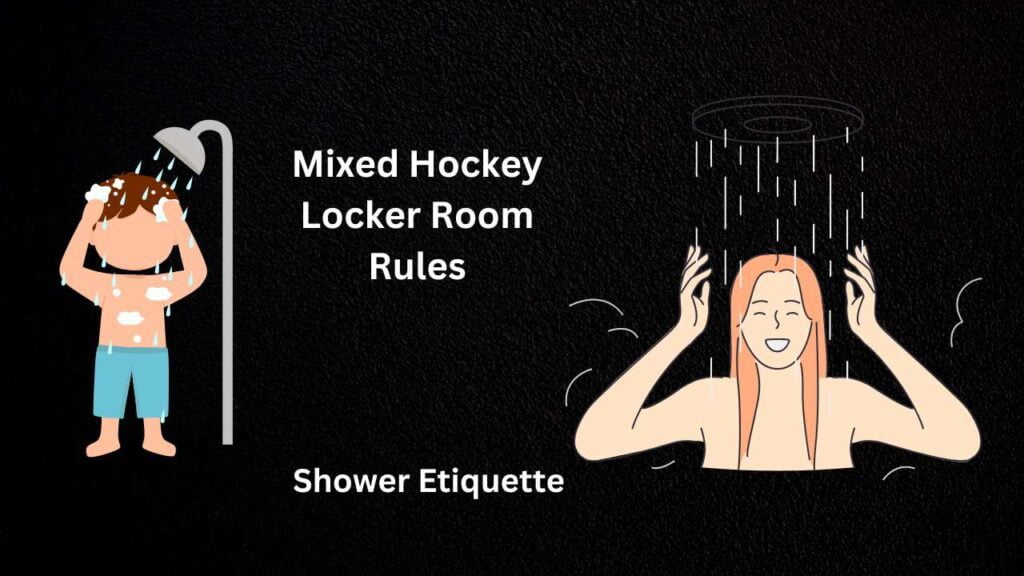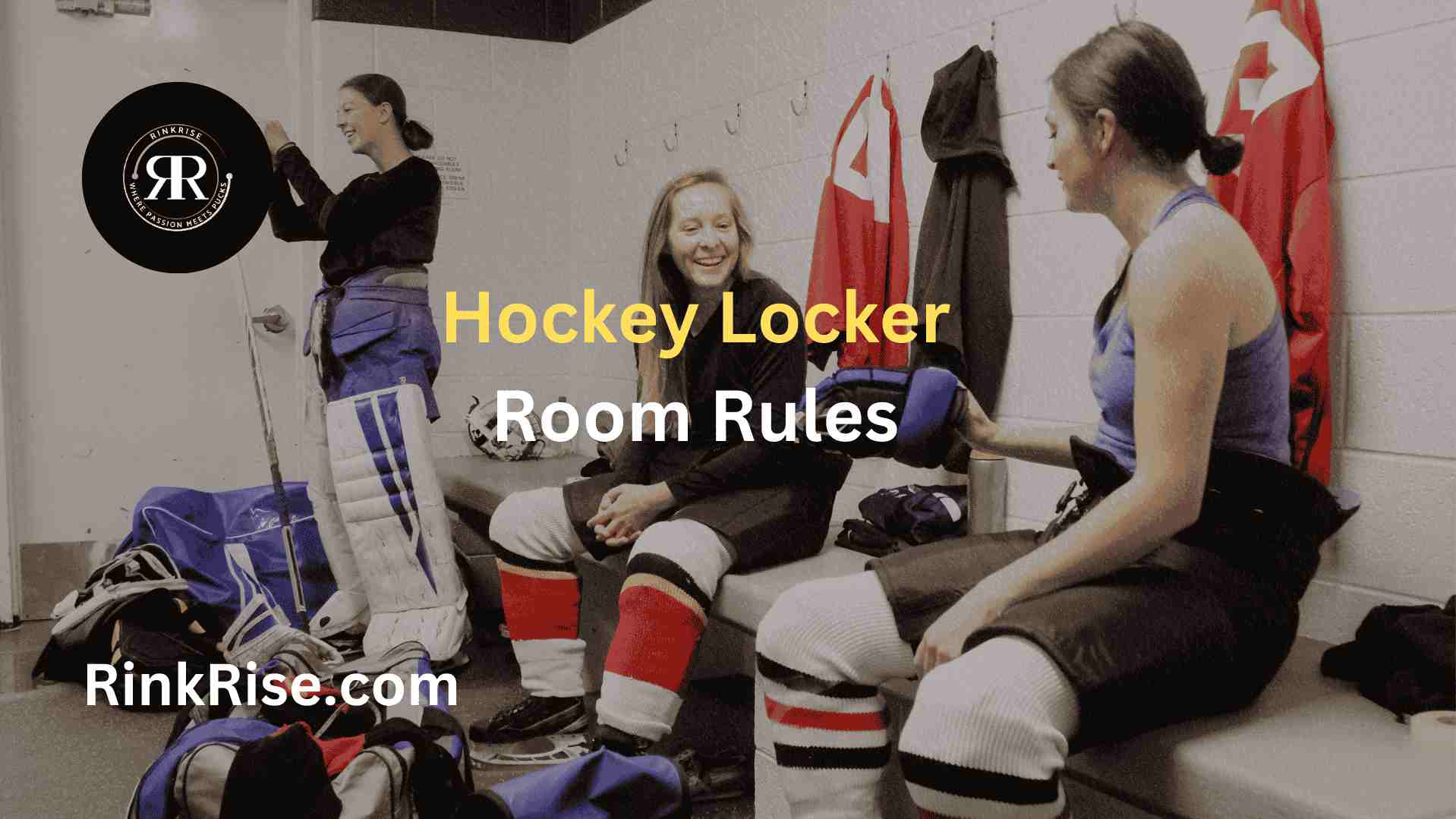Guidelines for Hockey Locker Room Rules
Respect and Responsibility
All players must be supervised by an adult while in the locker room. If there is no adult present, you must exit the room immediately.
Behavior Standards
- Horseplay or roughhousing is not allowed. Do not push, shove, or run.
- Stick play is strictly for the ice. Do not use hockey sticks outside of ice play.
- Avoid throwing any objects.
- Refrain from making ethnic, racial, or sexual comments and behaviors.
- Always display respect; no derogatory remarks or hazing is tolerated.
- Never criticize fellow players.
Maintaining Cleanliness
Keep the locker room tidy by disposing of all trash appropriately. Aim to leave the space cleaner than when you arrived.
Player Conduct
- Honor all commitments and agreements.
- Take pride in your behavior and appearance.
- Be punctual for all practices and games.
- Do not take possessions that are not yours. If you find an item, hand it over to a coach or the arena office.
Attention and Focus
- Listen attentively during individual or group addresses.
- Avoid lingering in the locker room longer than necessary.
Property Respect
You are personally responsible for any damage you cause to property.
Avoiding Disruptions
- No disruptive behavior will be tolerated.
- Do not use cell phones, cameras, or any recording devices in the locker room.
Adhering to these rules ensures a safe and respectful environment for everyone in the hockey locker room.
Team Supervision Protocols
Athlete Supervision
It’s crucial to ensure that no single staff member is alone with athletes in the changing area. This is to safeguard both the staff and players. The “Two Deep Method” of supervision, where at least two adults are present, should be strictly followed. If separate changing areas are needed, each must have adequate adult supervision according to the established guidelines.
Handling Injuries
Injuries should be treated openly where others can see, to maintain transparency and safety. Always implement the “Two Deep Method” when attending to injuries.
Guidelines for Female Teams
For female teams, it is preferable to have two female supervisors present. If this is not possible, a mixed team of one male and one female supervisor can be used, with the male supervisor staying within auditory range but outside the changing area.
Travel Guidelines
During travel, personnel and players should not share accommodations to maintain professional boundaries. If room sharing is unavoidable, the “Two Deep Method” should be maintained.
Physical Interaction
Physical contact between team personnel and players should be minimal, limited to safe areas like hands to shoulders, and always observed by another adult to ensure it remains appropriate and respectful.
Supervision in Isolated Areas
Children should not be left unattended in any part of the sports facility. Similarly, they should not be left alone with just one staff member. The “Two Deep Method” should be applied consistently.
Facility Waiting Areas
Ensure minors are not left unsupervised in facility waiting areas. Parents or guardians should be present, or a staff member should apply the “Two Deep Method.”
Parental Access to Changing Areas
Parental access to changing areas is generally discouraged unless necessary, such as for younger players who need help dressing or players with special needs. Coaches may allow brief parental access before and after games but can request parents to leave to maintain privacy and team cohesion. As players grow older, the need for parental presence in changing areas decreases.
Mixed-Gender Dressing Room Guidelines
Dressing Room Conduct
When teams consist of both male and female players, the following rules apply in the dressing room to maintain privacy and respect:
- Male players should remain dressed in at least shorts when females are present.
- Female players should remain dressed in at least shorts and a T-shirt when males are present.
Use of Separate Facilities
If separate changing facilities are available for male and female players, they should use these to change before joining the team in a mixed-gender dressing area, adhering to the minimum dress requirements.
Guidelines When Separate Facilities Are Unavailable
In situations where separate facilities are not available:
- Players should take turns dressing, undressing, and using shower facilities, while keeping to the minimum required dress code.
- Players of the less-represented gender should have access to the shower facilities after the majority has finished. It is crucial for the team to ensure compliance with these guidelines to maintain a respectful and inclusive environment.
Mixed Hockey Locker Room Rules
From a woman’s perspective, the essential rule in coed locker rooms is to maintain respect at all times. For men, it’s advisable to change personal garments like underwear and shorts in a designated bathroom area to ensure privacy and respect for everyone.
Keeping It Discreet
It’s common advice to “avert your eyes” to avoid seeing anything uncomfortable. This guideline applies to everyone in the locker room and helps maintain a comfortable environment for all. Women who prefer not to share a space with men can usually access women-only locker rooms provided by most facilities.
Shower Etiquette
While showers are an exception to the usual rules about nudity, it’s still important to carry a towel to and from the shower area. This practice respects personal boundaries and keeps the environment respectful for everyone, including those who opt not to shower in communal settings.

Personal Preparedness
In sports like hockey, being prepared with your own supplies, such as tape and equipment, is crucial. While teammates might assist occasionally, relying on others repeatedly is frowned upon and can strain relationships within the team.
Social Norms in Sports
Many sports teams, especially in amateur leagues like beer league hockey, incorporate social activities like drinking beer post-game. Bringing beer for the team can be a friendly gesture that helps solidify relationships and enhance the social experience, although it’s not mandatory.
Read Also: Why Do Hockey Players Dress in Suits?
Conclusion
Following these detailed guidelines helps create a respectful, safe, and welcoming space in hockey locker rooms. By promoting respect, keeping areas clean, and providing adequate supervision, we safeguard both players and staff. This approach supports a positive and professional environment for everyone involved.
FAQ’s: Hockey Locker Room Rules
What is the correct way to behave in a locker room?
Respect Personal Space
It’s important to be considerate of others in the locker room. Avoid taking up too much space by storing your belongings in a locker and only bringing the essentials with you. Remember to place used towels in the appropriate receptacle.
Do hockey locker rooms include shower facilities?
Yes, hockey locker rooms typically have shared restrooms and shower areas that are accessible to users of one or more locker rooms.
What is the function of a locker room?
A locker room serves primarily to prepare athletes for competition and to address their needs before and after events. Modern locker rooms also showcase team spirit and demonstrate appreciation for the players who use them.
Can male coaches enter female locker rooms?
Male coaches typically avoid entering female locker rooms, even after the players are ready, to prevent any appearance of improper conduct.
What are typical issues in a locker room?
Common problems in locker rooms include overflowing sinks and toilets, which can cause significant damage and costly repairs. Additional risks involve unstable fixtures like sinks and lockers, posing injury threats, and theft from unsecured lockers.



